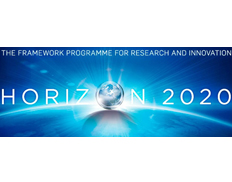Share
Print

Call Update
Oct 15, 2020 7:45:54 PM
An overview of the evaluation results (called 'Flash Call Info') for topic FETPROACT-09-2020 is now available under section Topic conditions and documents - Additional documents.
Jun 18, 2020 3:31:16 PM
A total of 43 proposals have been submitted in response to this topic FETPROACT-09-2020 (RIA) - Neuromorphic computing technologies under this call.
May 12, 2020 9:18:36 AM
Please note that specific evaluation forms are now available for topic FETPROACT-09-2020 under section Topic conditions and documents.
Apr 10, 2020
Deadline extended: 17 June 2020
Nov 19, 2019 12:30:03 AM
The submission session is now available for: FETPROACT-09-2020(RIA)
Nov 4, 2019 1:36:48 PM
Please note that specific proposal tempaltes are now published for topics FETPROACT-09-2020
Oct 8, 2019 11:37:02 AM
Please note that a Guide to ICT-related activities in H2020 work programme 2018-20 has been published in the Additional documents section in Topic conditions and documents of topic pages FETPROACT-09-2020.
Neuromorphic computing technologies
ID: FETPROACT-09-2020
Type of action: RIA Research and Innovation action
Deadline Model : single-stage
Planned opening date: 19 November 2019
Deadline: 22 April 2020 17:00:00 Brussels time Forthcoming
Horizon 2020
Work programme: Future and Emerging Technologies
Work programme year: H2020-2018-2020
Call name: FET Proactive – Boosting emerging technologies
Call ID: H2020-FETPROACT-2018-2020
Specific Challenge:
The potential of neuromorphic computing has been only partially explored so far. Compared to biological neural networks, current neuron/dendrite models are simple, the networks small and learning models appear to be rather basic. The implementations are often VLSI-based CMOS with little resemblance to the substrate of their biological counterparts, and too power-hungry. The challenge is to exploit a wider range of biological principles from the hardware level up (e.g., neuro-mimicking materials and principles – electronic, photonic, ionic,… – , 3D networks, higher degrees of connectivity, cross-connectivity, spiking, rate-based and population-level neuronal dynamics, oscillations, plasticity, parallelism, etc.) and from the cognitive level down, by developing the related algorithms and programming framework, in order to create neuromorphic technologies that can outperform current systems in terms of size, scalability, connectivity, power consumption, ease of training, flexibility, reliability or any other relevant metrics.
Scope:
proposals will target new computational substrates and engines, based on new materials and engineering principles for efficient and low-power neuromorphic computing; together with new theories, architectures and algorithms for neuromorphic computation (classification, control,…), learning (including unsupervised, incremental, single-shot and/or event-based) and adaptation/plasticity for and in such new neuromorphic hardware.
These should be brought together in systems or artefacts that demonstrate clear advantages for replacing or complementing state-of-the-art conventional approaches in challenging end-to-end scenarios of use (e.g., on-line edge computing, personalisation, embedded, robotic/agent control,…) in various fields of applications.
The Commission considers that proposals requesting a contribution from the EU between EUR 4 and 5 million and with a duration of up to 4 years would allow this specific challenge to be addressed appropriately. Nonetheless, this does not preclude submission and selection of proposals requesting other amounts.
Expected Impact:
The action will contribute to:
Bring neuromorphic engineering at the level where it can be benchmarked in terms of performance, power consumption, size, latency or other relevant metric e.g., for learning capacity, speed or plasticity, and its interfaces be standardised;
Pave the way to market take-up of neuromorphic computing in a range of existing and new application areas, with demonstrable advantages, either as stand-alone or complementing more conventional solutions;
Stimulate the emergence of a European innovation ecosystem around neuromorphic engineering, well beyond the world of research alone.
